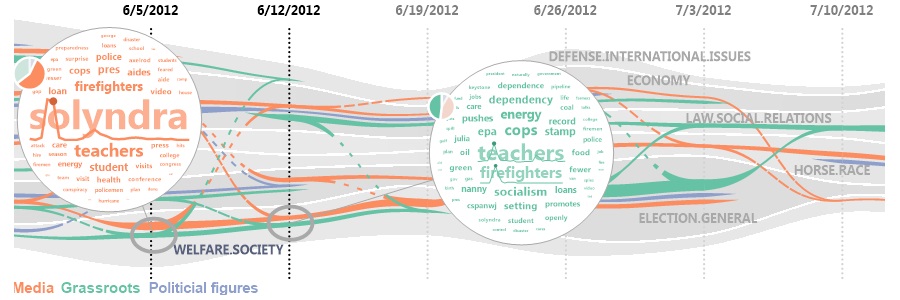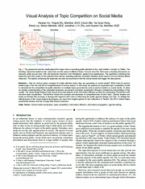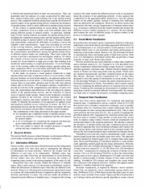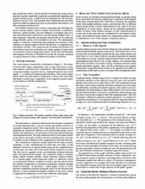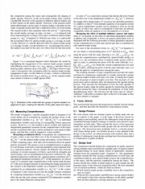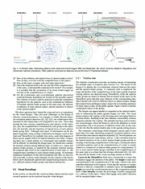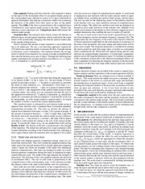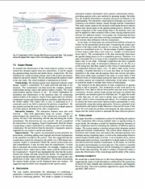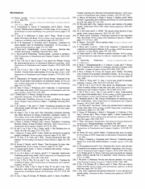Visual Analysis of Topic Competition on Social Media
Panpan Xu*1
Yingcai Wu2
Enxun Wei*1,3
Tai-Quan Peng4
Shixia Liu2
Jonathan Z.H. Zhu5
Huamin Qu1
Authors associated with * are/were the interns under the supervision of Yingcai Wu in MSRA
1Hong Kong University of Science and Technology
2Microsoft Research Asia
3Shanghai Jiao Tong University
4Nanyang Technological University
5City University of Hong Kong
How do various topics compete for public attention when they are spreading on social media? What roles do opinion leaders play in the rise and fall of competitiveness of various topics? In this study, we propose an expanded topic competition model to characterize the competition for public attention on multiple topics promoted by various opinion leaders on social media. To allow an intuitive understanding of the estimated measures, we present a timeline visualization through a metaphoric interpretation of the results. The visual design features both topical and social aspects of the information diffusion process by compositing ThemeRiver with storyline style visualization. ThemeRiver shows the increase and decrease of competitiveness of each topic. Opinion leaders are drawn as threads that converge or diverge with regard to their roles in influencing the public agenda change over time. To validate the effectiveness of the visual analysis techniques, we report the insights gained on two collections of Tweets: the 2012 United States presidential election and the Occupy Wall Street movement.
@article {YWu2013d,
author = {Panpan Xu and Yingcai Wu and Enxun Wei and Tai-Quan Peng and Shixia Liu and Jonathan J.H. Zhu and Huamin Qu},
title = {Visual Analysis of Topic Competition on Social Media},
journal = {IEEE Transactions on Visualization and Computer Graphics (Proceedings of IEEE VAST 2013},
year = {2013},
volume = {19},
number = {12},
pages = {2012--2021}
}
We would like to thank Professor Lu Wei from Zhejiang University for suggesting the chance of interdisciplinary collaboration, the anonymous eviewers for their valuable and constructive comments, and Fangzhao Wu for his help. This work is partially supported by a grant from MSRA and RGC GRF 618313.
Copyright © 2015 by Yingcai Wu. All rights reserved
